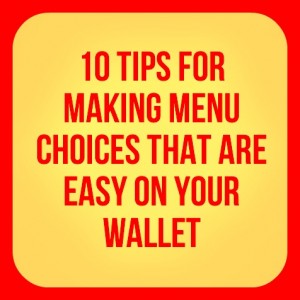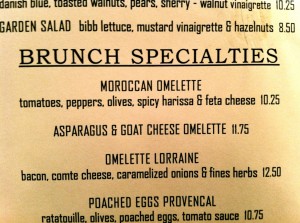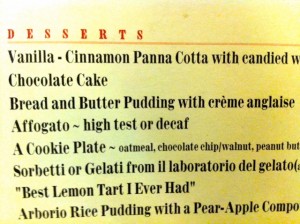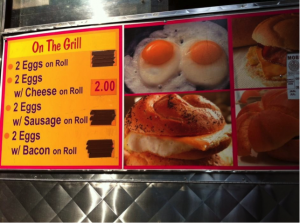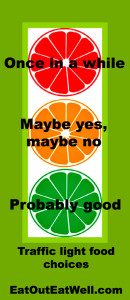 Here are some tips on recognizing menu descriptions to help you make the best caloric choices (of course, portion size plays a big role, too).
Here are some tips on recognizing menu descriptions to help you make the best caloric choices (of course, portion size plays a big role, too).
Any menu item will have tons of added calories if it is:
- smothered in sauce
- covered or layered with cheese
- loaded with butter, oil, cream, mayonnaise, or dressing
- “sugared-up” even if it doesn’t taste sweet
- made from a fatty cut of meat
- made with hidden sugar or flour and/or some type of fat for thickening
- a huge portion size
Green Light (Probably A Good Choice) words or phrases:
- Barbequed
- Blanched
- Boiled
- Grilled/Broiled/Charbroiled
- Fat free
- Garden fresh
- Poached
- Primavera
- Red sauce/ Marinara
- Roasted
- Seasoned
- Steamed
Quick hint: Words ending in the letter “d” are frequently on the okay list, for instance: poached, boiled, grilled, and steamed. Some notable exceptions are: fried, and the “b-d” words: buttered, battered, and breaded.
Yellow Light “Caution” Foods (Maybe Yes, Maybe No)
Words frequently used on menus to describe “yellow light foods,” should be chosen cautiously because they may or may not be healthy choices.
Yellow Light words or phrases:
- Baked
- BastedStir-Fried/Sauteed
- Vegetarian
- Vinaigrette
- High Fiber
- Light/Lite
- Reduced
- Marinated
- Stewed
- Panini
- Almandine/Almondine
Red Light (Once In A While) Foods
Really think hard before eating food described with these words and phrases:
- Au gratin/Cheesy/Parmigiana
- Aioli
- Alfredo
- Battered/Encrusted/Crusted
- Bearnaise/Hollandaise
- Bet you can’t finish it/ Bottomless/Value/Giant/Jumbo/Loaded
- Bisque
- Breaded
- Buttery / Buttered
- Carbonara
- Casserole
- Chicken fried/Pan fried
- Covered/Smothered
- Creamed/Creamy/White Sauce/Bechamel
- Crispy/Crunchy
- Deluxe
- Escalloped/Scalloped
- Fried/Deep fried
- Pesto
- Stroganoff
- Stuffed
- Twice baked
Quick hint: Words ending in the letter “y” should usually send up red alerts, for instance: cheesy, crispy, crunchy.
This post is part of the 500 calorie challenge: lose 5 pounds in 5 weeks the healthy way.
